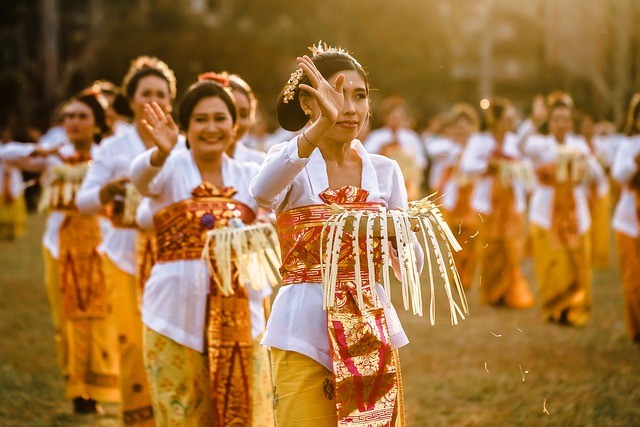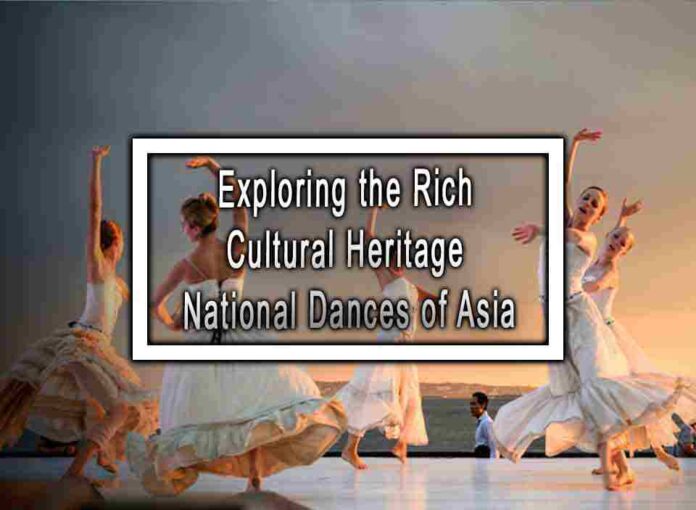Asia is a continent known for its diverse cultural heritage, and national dances play a significant role in preserving and showcasing the traditions and artistry of each country. Let’s explore some of the rich national dances of Asia:
1. India – Bharatanatyam
Originating in the southern state of Tamil Nadu, Bharatanatyam is one of the oldest classical dance forms in India. It is known for its intricate footwork, expressive hand gestures, and elaborate costumes. Bharatanatyam often depicts stories from Hindu mythology.
2. China – Peking Opera
Peking Opera, also known as Beijing Opera, combines elements of music, dance, mime, and acrobatics. It features stylized movements, vibrant costumes, and intricate makeup. Peking Opera tells stories from Chinese history, folklore, and literature.
3. Japan – Kabuki
Kabuki is a traditional Japanese theater art form that originated in the early 17th century. It features elaborate makeup, exaggerated facial expressions, colorful costumes, and stylized movements. Kabuki performances often depict historical events, legends, and dramatic stories.
4. Indonesia – Balinese Dance
Bali, an island in Indonesia, is renowned for its vibrant dance forms. Balinese dances are characterized by intricate hand movements, expressive facial expressions, and dynamic footwork. These dances are often performed during religious ceremonies and cultural events.

5. Thailand – Thai Classical Dance
Thai Classical Dance, also known as Khon, is a traditional dance form that combines graceful movements, intricate costumes, and symbolic gestures. It often depicts scenes from the Ramakien, the Thai adaptation of the Indian epic Ramayana.
6. Cambodia – Apsara Dance
Apsara Dance is a classical dance form from Cambodia that dates back to the Angkor period. It is characterized by delicate hand movements, flowing costumes, and intricate headpieces. Apsara Dance portrays mythical tales and scenes from Cambodian history and legends.
7. Philippines – Tinikling
Tinikling is a folk dance from the Philippines that involves dancers skillfully maneuvering between bamboo poles. The dancers rhythmically move their feet and gracefully avoid getting caught between the bamboo poles, creating a captivating display of coordination and agility.
8. South Korea – Buchaechum
Buchaechum, also known as the Fan Dance, is a traditional Korean dance performed with colorful fans. The dancers create beautiful patterns and formations with their fans, symbolizing nature, elegance, and grace. Buchaechum is often performed during festive occasions and cultural events.
9. Vietnam – Hat Dance
Hat Dance, also known as the Vietnamese Hat Dance, is a traditional dance form that originated in northern Vietnam. Dancers wear conical hats and use them as props to depict various activities like farming, fishing, and daily life. The dance combines graceful movements with rhythmic hat manipulation.
10. Malaysia – Zapin
Zapin is a traditional Malay dance that originated in the Malay Archipelago. It combines graceful movements with percussive footwork and is often performed during weddings and cultural celebrations. Zapin incorporates elements of Islamic culture and Malay traditions.
These are just a few examples of the rich national dances found across Asia. Each dance form represents the unique cultural heritage of its respective country, preserving traditions and storytelling through movement, music, and costume. Exploring these dances provides a glimpse into the rich and diverse cultural tapestry of Asia.










